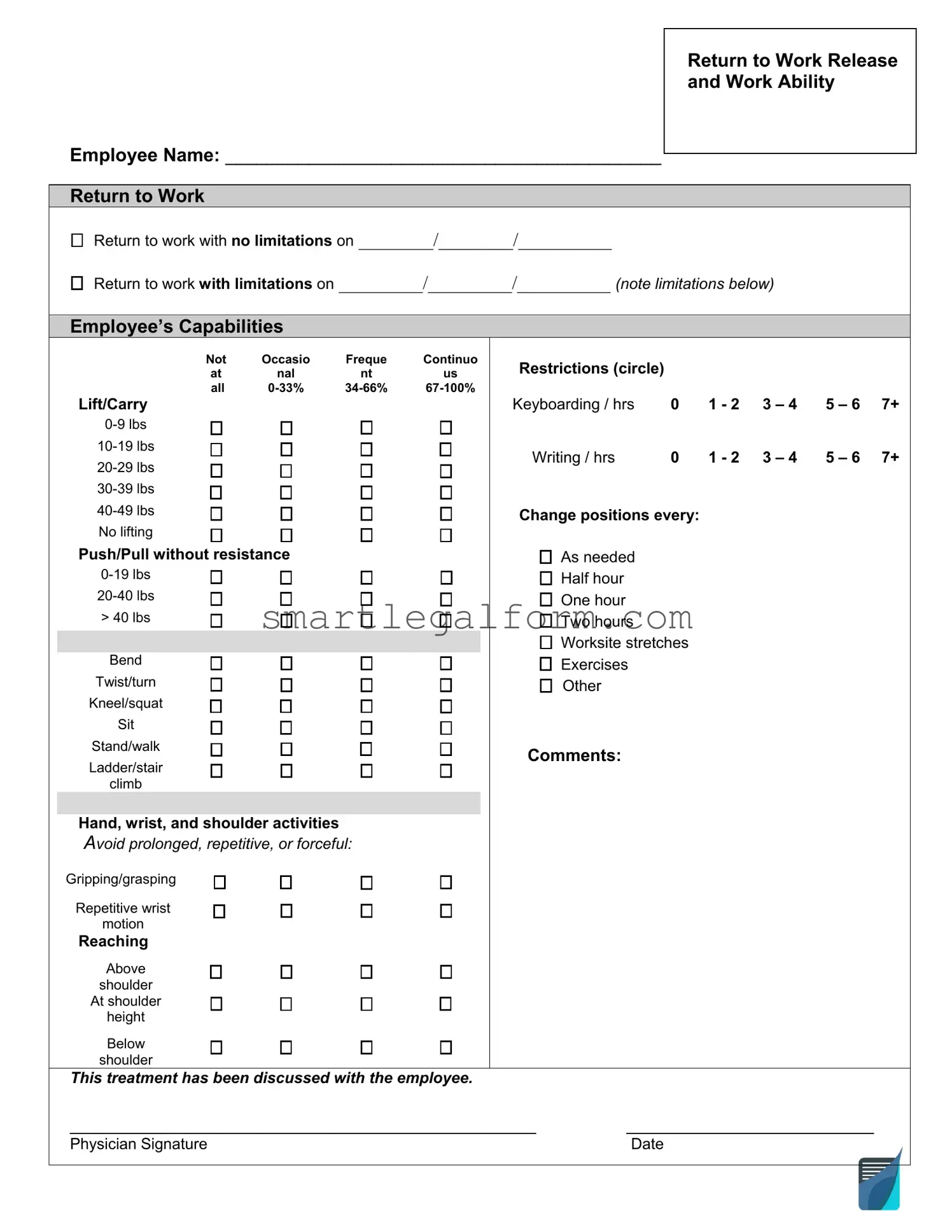Filling out a Work Release form can seem straightforward, but many people make common mistakes that can lead to delays or complications. One frequent error is providing inaccurate personal information. This includes misspellings of names, incorrect addresses, or wrong social security numbers. Such inaccuracies can cause significant issues, especially when verifying identity or processing the form.
Another mistake involves failing to read the instructions carefully. Each Work Release form may have specific guidelines that need to be followed. Ignoring these instructions can result in missing required information or not signing the form where necessary. This oversight can lead to the form being rejected or returned for corrections.
Additionally, some individuals forget to provide supporting documentation. Many Work Release forms require additional paperwork, such as proof of employment or a letter from an employer. Without these documents, the application may not be considered complete, which can delay the approval process.
People often overlook the importance of double-checking their entries. Rushing through the form can lead to simple mistakes, such as incorrect dates or numbers. Taking a moment to review the completed form can help catch these errors before submission.
Another common error is not keeping a copy of the submitted form. After sending in the Work Release form, individuals should always retain a copy for their records. This can be crucial if there are questions or issues later on, as having a reference can simplify communication with the relevant authorities.
Lastly, some individuals fail to follow up on their application status. After submitting the Work Release form, it is important to check in periodically. This proactive approach can help ensure that any potential issues are addressed promptly and that the application is processed in a timely manner.

